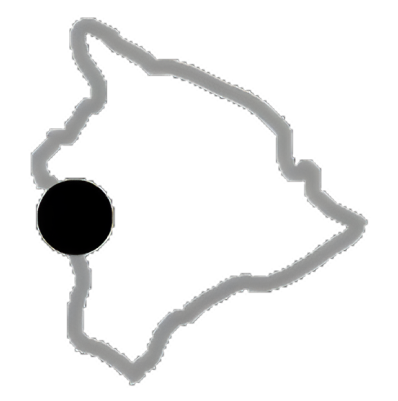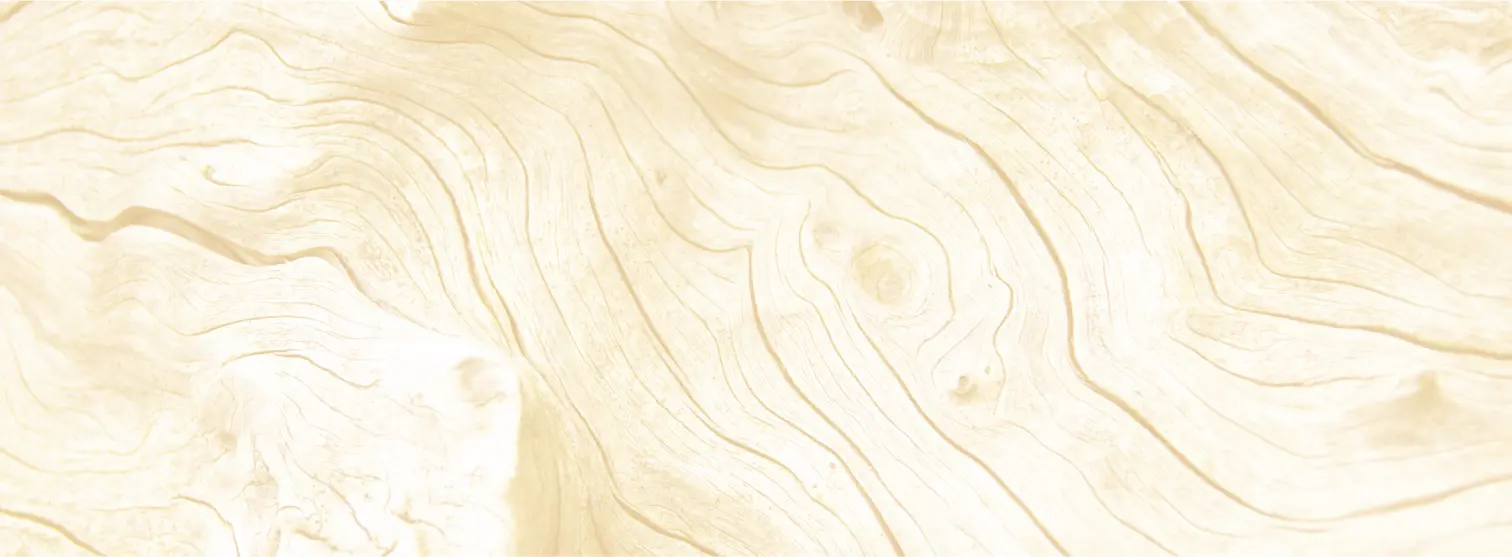It is ancient and noble. And it is generous. The life that exists on, around, and in this monarch of the forest is remarkable. The tree is more than just itself, it is the sum of all that make it their home. This koa contains a priceless inventory of life.
Nearly 25 feet in circumference, over 100 feet tall, and with a crown spread close to 150 feet, the koa has plenty of room for all sorts of organisms. The first things I noticed were all the epiphytes. Epiphytes are plants that grow on other plants. In rainforests just about any plant can grow epiphytically including other trees. There is a 20-foot tall ohia-lehua growing in the crotch of the main fork in the trunk. It’s a pretty little ohia that has a fine perch above the fern floor below. Three other species of trees and shrubs grow on the koa. At its base a half dozen olapa trees, with their antiseptic, turpentine odor, grow on the thick koa roots that crawl along the forest floor. There is also a pukiawe and an ohelo, which take hold next to each other on a large root. Unlike the small shrubs one finds on the lava flows, these individuals are small trees 10 to 15 feet tall.
Ferns, mosses, lichens, molds and fungus account for the great majority of plants on the Koa. About sixty feet high, along a major branch, the shuttlecock fern, Dryopteris wallichiana rises up in its distinctive shape of a badminton birdie. Besides the Dryopteris there are lots of other ferns sprouting on the koa. Hairy stag’s tongue (Elaphoglossum hirtum) is perhaps the most numerous. Another Stag’s tongue is ekaha, which has a smooth, fleshy stalk unlike its hairy cousin. Two tiny little finger ferns grow in bunches right next to one another, the kolokolo (Grammitis tenella) and the small, serrated kihe (Lellingeria saffordii.) Three different Asplenium ferns find moist little crannies to their satisfaction. Many parts of the tree are covered in various mosses. Some are thick and spongy, others are thin and slimy. Most of the upper smaller branches are draped in the yellow, stringy lichen that looks like Spanish moss. There is a bright green mold in one spot of damp shade that appears to be the same stuff that grows so easily on bread in Hawaii. Below the mold is a large Table-bract fungus. Yellow-white in color, it is smooth and cool to touch and leaves a lovely aromatic mushroom scent on the fingers.
My favorite epiphyte is the ala ala wainui. Its beauty is hidden from casual view. From the top it looks like a plain green plant with small pointed leaves. Turn the leaves over and an exquisite deep variegated maroon color is revealed. Looking up the tree, the ala ala wainui glows with color as the sunlight passes through from above. They are precious, twinkling tree ornaments.
The invertebrate residents of the Koa are numerous. There is a large honeybee hive in a cavity from a broken branch. It is a significant nest with honeycomb visible from the ground and black propolis stains leaking down the trunk. Plagithmysus varians is a cute little triangular woodborer whose larvae provide an important food source for some forest birds. The Koa bug (Coleotichus blackburiae) is the largest native bug. Its back is dimpled with dots of iridescent green and blue. Spiders are usually easily found among the bark and small cavities. The Long-jawed, hump-backed, spiny-legged spider, (no description needed after the common name!) has the wonderful scientific moniker Tetragnathus quasimodo. Though in the orb-weaver family, it has given up building a web and hunts its prey raptorially. Once at night, I discovered the largest spider I’ve ever seen in the native forest. It was a Comb’s footed spider that was bright rusty orange, just like the orange rusty mold or lichen growing on the tree’s bark. Three to three and a half inches in length, its arched abdomen gave off a metallic sheen. I have yet to find one again.
Partly because of the trees invertebrate wealth, it is a fabulous place for birds. The great Koa has given me hours of enjoyable birdwatching. I have observed every bird species found in the forest along its trunks and limbs or foraging among its leaves and flowers. Io, the Hawaiian hawk has perched in its branches. Family groups of endangered Hawaii Creepers and the Akiapolaau have gleaned insects from its wood and bark. Amakihi, Apapane, and Iiwi frequent the tree for insects and nectar. Omao has nested for two seasons within a small hole in a limb. Elepaio flit around catching bugs, flies and moths. Turkeys roost for the night as do Kalij pheasant. A Japanese white-eye once took a birdbath in a fresh pool of rainwater caught in a crack of the tree. There are always birds to be found within the koa.
The Koa is a treasure chest in the forest. Its existence provides for a richness of life that is uniquely Hawaiian. Yes, there is value in a koa picture frame, hand-turned bowl, or a handcrafted furniture piece. But how can we value the richness of a living tree?
One day a male Akiapolaau was feeding in the Koa. As it hopped around, pecking, prying and probing in its search for food, I followed it intensely with my binoculars. What a joy to watch such a marvel of evolution. One of the rarest of Hawaiian wet forest birds, it may likely be extinct in the not too distant future. Suddenly it flew directly above me and pooped. The digested remains of some grub landed squarely upon my left shoulder. Good as gold sitting on the shoulder of a naturalist, that little gray goop of bird dropping, is as great a gift to be received while on a walk in the forest. It was made possible by the life of a mighty Acacia koa.


